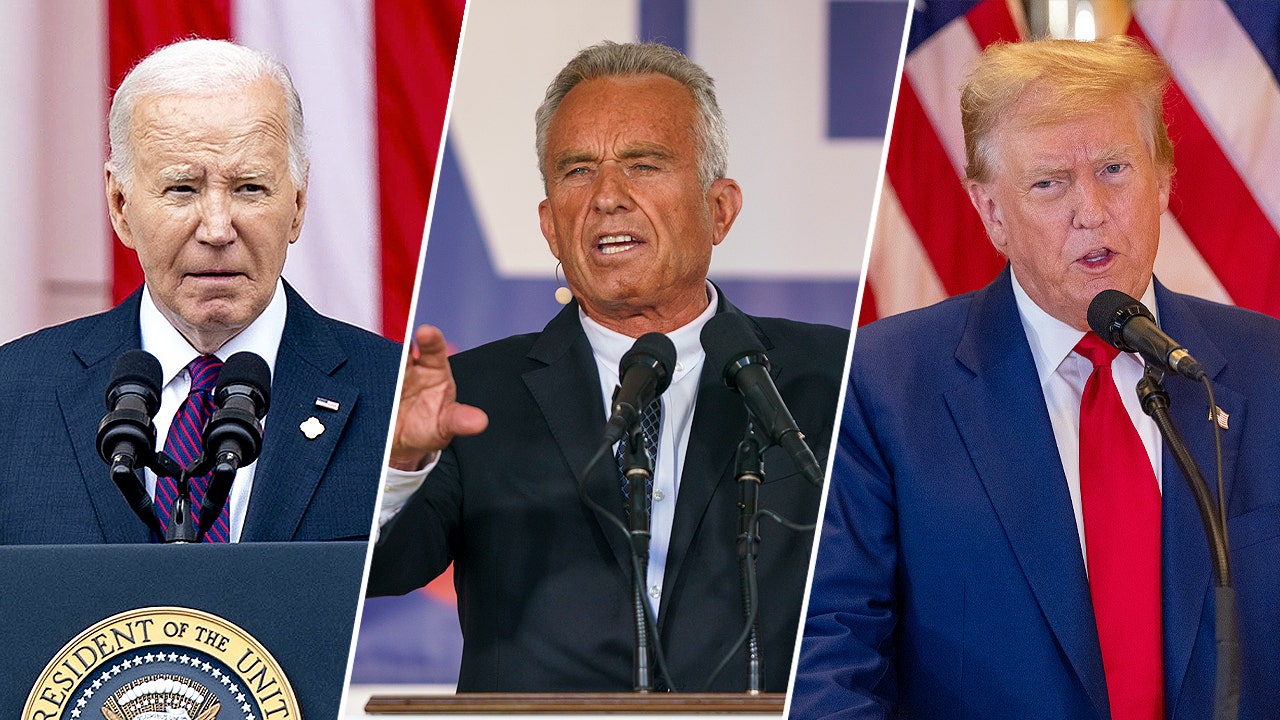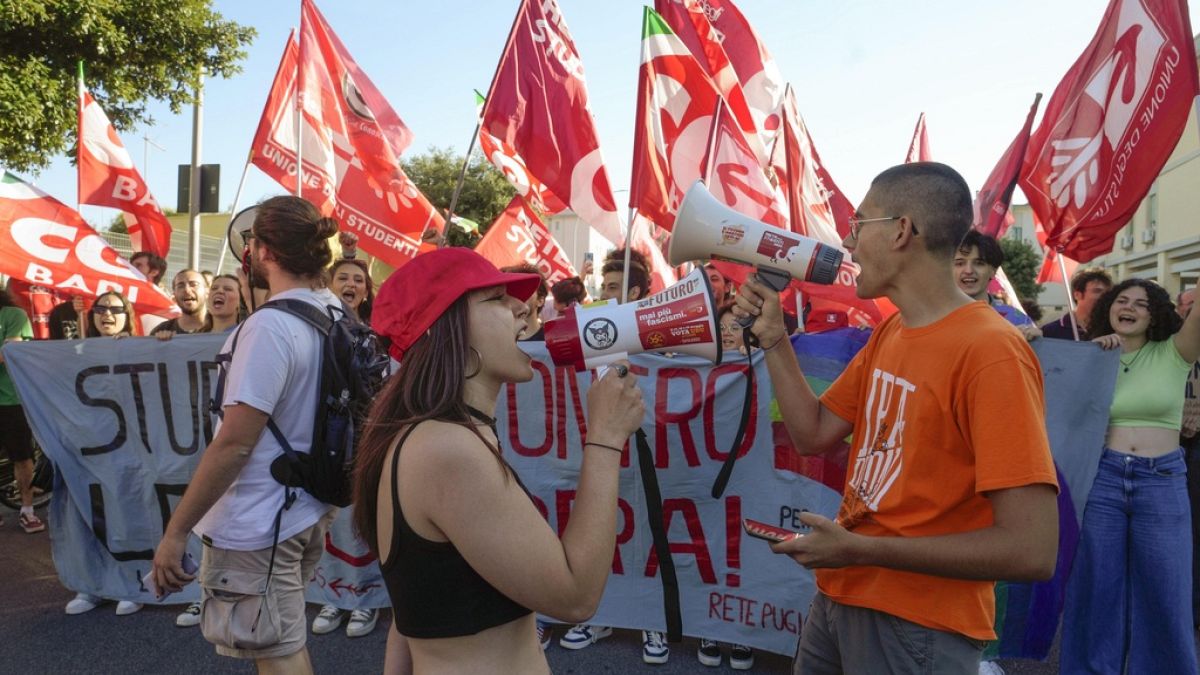Education
Opinion | America’s Student Loans Were Never Going to Be Repaid

Line charts showing how student loans with balances exceeding the original borrowing amount due to interest have increased over time, until the pandemic repayment pause in 2020 stagnated loans.
Here is a picture of America’s student debt over time, focusing on loans with balances higher than the original borrowed amount due to accumulating interest. Normally, borrowers slowly begin to repay loans after finishing college. So, the older the loan, the less likely it is to have a balance exceeding the borrowed amount.
But this system has been breaking down. 2013 was the first year when over half of all student loans carried a balance greater than originally borrowed.
Recognizing the rise in struggling borrowers, the government expanded the income-driven repayment program in 2015. Borrowers under that plan don’t have to make full payments. But their unpaid interest accumulates faster.
The line is high and flat in 2019, showing that most student borrowers couldn’t keep up with interest.
The 2020 student loan repayment pause shook up this unhealthy dynamic. From then on, the youngest loans never accumulated unpaid interest, and the overall share of loans with balances greater than borrowed amounts began to come down. In 2022, recent borrowers were still benefiting from the pause. When the pause ends in September, balances are expected to trend back toward the 2019 plateau.
Source: Experian Information Solutions; Jain Family Institute
Laura Beamer is the lead higher education finance researcher at the Jain Family Institute. Marshall Steinbaum is a senior research fellow at the institute and an assistant economics professor at the University of Utah.
In the early days of the Covid-19 pandemic, the federal government stopped requiring regular payments of student loan debt — a pause that has lasted more than three years. But student loan repayment had been dwindling for at least a decade before the pause.
You can imagine the stock of outstanding student debt as an overflowing bathtub: More students purchasing more undergraduate and advanced degrees at increasing tuition prices is the water gushing out of the faucet, and non-repayment is a blockage in the drain. The drain is blocked because despite what economists, policy-makers and educational administrators claim, a college degree doesn’t always “pay off.”
In recent years, many Americans with student loans weren’t making enough money to pay even the accumulating interest on their debt, let alone make progress on the principal. Wage stagnation is a long-running phenomenon that worsened after the Great Recession. But an important additional source of student loan misery is the widening and diversifying nature of the Americans who take them out. It’s increasingly the case that people who were always going to have low earnings no matter their educational attainment are also overloaded with student debt — think of underpaid teachers who acquired expensive master’s degrees for only a modest pay increase. The promise of higher education leading directly to high incomes is hollow.
Regardless of what happens after the scheduled resumption of payments in September and to the Biden administration’s plans for partial student debt forgiveness following the Supreme Court’s ruling in June, we predict that most of the outstanding balances — not to mention the roughly $100 billion in new loans issued every year — won’t ever be repaid. In the meantime, while the administration and the courts wrangle over the executive branch’s ability to waive student debt under existing law, student debtors feel forced to downsize their life plans. They delay or forgo marriage and family formation, homeownership, retirement and their children’s education: a profound failure of social reproduction.
Our student debt research uses credit reports, both from an annual, representative cross-section of student borrowers and from a single group of borrowers we’ve been following since 2009. We found that counterintuitively, the repayment pause was the best thing that ever happened to help student loans get repaid. That’s because in normal times, student debt balances mostly increase, thanks to monthly interest payments many borrowers are unable to keep up with. In 2020, 60.7 percent of outstanding student loans had a higher balance than when they were first issued. By 2022, that number had declined to 53.7 percent because interest was waived during the pandemic and some borrowers continued to pay down their principal.
The chart below compares repayment progress on loans in our 2020 cross-section with progress in 2022. The group with increasing balances shrank enormously during the repayment pause. Notably, Black and Latino borrowers had more loans with increasing balances before the pause; they benefit disproportionately while it remains in effect.
The pandemic payment pause is a salve for a sick student loan system
Loans that previously had increasing balances instead held steady, while some borrowers continued to pay down their debt.
Source: Jain Family Institute
Note: Racial groups are imputed from the American Community Survey’s census tract demographic data for the borrower.
Student borrowers are not a monolithic group, and some demographic groups fare far better with their education debt than others. From the group of 2009-era debtors we’ve been following, we learned that female, Black and Latino borrowers generally saw their loan balances continue to increase above their 2009 level; male, white and Asian borrowers generally were able to make progress in paying their balances down (albeit not to zero — and the standard repayment term on federal loans is 10 years).
On average, male, white and Asian borrowers made progress on their loans between 2009 and 2022. Female, Black and Latino borrowers had increasing balances until the repayment pause came into effect. Source: Jain Family Institute
The diverging trajectories of Americans with student loans
These divergent trajectories are due to structural inequalities in the labor market, which disadvantaged workers try to overcome with increased educational attainment. More advantaged workers don’t need to borrow as much to earn a decent salary and can start paying off the debt they do take on more quickly. The pandemic repayment pause changed the game, causing balances that had been increasing over the prior decade to start to fall. A student loan system in which borrowers do not generally repay their student loans during normal times, but in which they do repay them when they’re not required to, cannot be said to be functioning well.
This situation is the fruit of a tacit agreement among state legislatures, college administrators and the federal government dating back to the 1970s: defund public colleges and universities and shift them to a tuition-based revenue model, with the federal government backstopping the system with student debt so that more students can continue to obtain more expensive education. This change was justified by the idea that higher education “pays off” in the labor market.
Opportunities for middle-class employment without a college degree have certainly dwindled. But increasing the educational credentials required for any given job or salary doesn’t magically make pay go up. It just means the higher education system gets to take a larger slice of a worker’s lifetime earnings on the front end. And if the debt can’t be repaid, taxpayers swallow the loss on the back end — but only after the borrower has endured years of mounting balances and their negative consequences for wealth accumulation and creditworthiness.
This odd structure — in which federal funding comes in the form of student loans that won’t ever be repaid, as opposed to direct funding of colleges and universities — lets school administrators off the regulatory hook. In theory, the market of students selecting their preferred college experience is supposed to discipline schools’ financial conduct. In reality, it does not. This is why college administrators resist free-college proposals that amount to direct federal funding in return for capping tuition: They fear their socioeconomically segregated business models wouldn’t survive the regulatory scrutiny attached to those dollars.
The $1.7 trillion tower of mostly unrepayable student debt is a symbol of education policy failure. Unfortunately, politicians in both parties seem unable to think outside the neoliberal box that got us here. Republicans in Congress have proposed limits to federal loans, barring students from the system once their balances reach a certain threshold. That is an exclusionary vision that seeks to return higher education to its pre-G.I. Bill status as a bastion of white privilege for a tiny elite.
The Biden administration proposes to regulate (some) colleges based on whether their students can eventually repay their student loans and to force all programs to disclose post-graduation earnings and debt burden before students enroll. Those proposals cling to the idea that the labor market is where the value of an education is ultimately determined. Colleges can convincingly object that they don’t control their students’ lives after graduation and would be penalized for enrolling needier students.
To get a handle on the student debt crisis, the government will eventually have to redesign its relationship with American higher education. The current era of tuition-based revenue models has colleges competing for the students who can pay full freight, which can relegate the neediest students to the least-resourced institutions. A healthier system would look more homogenous, with students from all over the income scale spread across institutions nationwide, instead of being an elite scramble between students and schools to fill a few open seats at the top.
To get there, the Department of Education should make institution-level eligibility for federal student loans contingent on a uniform, very low cost of attendance for undergraduates and affordable tuition levels for professional programs. The structure of federal student loans should reflect society’s long-term needs, not just those of employers and universities preying on the generosity of the student loan program and of students desperate for jobs in an economy that feels ever more winner-take-all.
One way of ensuring and backstopping those policy goals could be the creation of a new federal university system, in which the campuses would be homogeneous in terms of financial and other resources and the student bodies socioeconomically diverse, rather than the other way around. But it’s more comfortable and politically convenient to continue to fight the culture war over higher education than to confront the facts about the causes and consequences of this ugly mountain of student debt. The Supreme Court has ruled. The Biden administration is searching for a new way forward. It’s time for a change of course.

Education
Video: Clashes Break Out at U.C.L.A.

new video loaded: Clashes Break Out at U.C.L.A.
transcript
transcript
Clashes Break Out at U.C.L.A.
Police arrested more than 20 pro-Palestinian demonstrators on U.C.L.A.’s campus after several physical confrontations with security guards.
-
“Are you OK, are you OK?” “Don’t hit him. Don’t hit.” “Wrong person, wrong person, wrong person.” “I was just holding you.”
Recent episodes in Israel-Hamas War
Education
Read a Judge’s Letter of Recommendation for Elias Irizarry

Tanya S. Chutkan
Judge
UNITED STATES DISTRICT COURT
FOR THE DISTRICT OF COLUMBIA
June 1, 2023
E. BARRETT PRETTYMAN COURTHOUSE
WASHINGTON, DC 20001
202-354-3390
The Citadel, The Military College of South Carolina
Admissions Office
171 Moultrie Street
Charleston, South Carolina 29409
Re:
Letter of Recommendation for Elias Irizarry for Readmission to The Citadel
Dear Admissions Office,
I am writing to recommend Elias Irizarry for readmission to The Citadel. I first encountered Mr.
Irizarry in 2021, when he appeared as a defendant in one of my cases, and I have had the opportunity to
learn more about him during the plea hearing, status conferences, and sentencing hearing. It is rare for
me to write a letter on behalf of a defendant, and this is the first time I have done so to recommend a
defendant for college admission. But Mr. Irizarry impressed me and has demonstrated that he is an
individual worthy of a second chance.
In considering Mr. Irizarry’s particular circumstances, I am reminded of the words of human
rights lawyer Bryan Stevenson: “Each of us is more than the worst thing we’ve ever done.” These
words acknowledge the potential for growth and transformation within us all, especially for someone as
young as Mr. Irizarry, who was only 19 years old when he committed the offense for which I sentenced
him. I ask that you look beyond Mr. Irizarry’s past mistakes, for which he has demonstrated genuine
remorse, defer to his exceptionally positive history, and allow him the opportunity to prove that the sum
of his character extends beyond a singular flawed decision.
Mr. Irizarry is a bright young man who wishes to serve his community and his country. He has
been a diligent and committed student and community member and received outstanding grades and
numerous accolades from esteemed institutions like The Citadel, the United States Marine Corps, Model
UN, and JROTC. Over the past five years, he has dedicated nearly 600 hours to community service,
assisting at hurricane sites and a Veterans Hospital. He has further demonstrated his commitment for
civil service by completing training to become a FEMA volunteer firefighter.
Although Mr. Irizarry’s actions were serious and were dealt with as such, it is important to weigh
his youth and susceptibility to influence. As a judge and the mother of two sons in their twenties, I
know that Mr. Irizarry is at a crucial inflection point for young adults. The educational system, like the
criminal justice system, can serve as a catalyst for positive transformation, enabling youth to learn from
their mistakes.
Accordingly, I write this letter because Mr. Irizarry has displayed impressive sincerity, remorse,
and a determination to make amends. I believe that if he is given the opportunity to re-enroll at The
Citadel, he will continue to thrive academically and personally, as well as encourage others to overcome
obstacles and pursue public service.
Should you require any further information or assistance, please do not hesitate to contact me.
Sincerely,
Tanya S. Chutkan
Tanya S. Chutkan
Education
Video: ‘It Didn’t Have to Happen This Way:’ U.Va. Faculty Call for Review of Police Response to Protests

Protesters: “Disclose! Divest!” In student-led protests around the country, university faculty have stood in support of demonstrators, risking arrest. “He is a professor. He is a professor.” At the University of Virginia, The Times got an inside look at faculty’s role. “I can take you through the blow by blow of the day if you want.” And how their negotiations with police broke down at a crucial moment. “Why is he —” “Back up.” “In a wanton fashion, they allowed the Virginia State Police to come here fully armed, rifles, mace. One of my colleagues was standing right there trying to talk to the Virginia State Police. He got arrested. The other one standing next to him got pushed back behind the line, and he got partially maced. It didn’t have to happen this way.” The night before police raided a pro-Palestinian encampment, a few University of Virginia professors tried to deescalate the standoff and recorded their conversation with the university police chief, Tim Longo. The Times agreed to blur the faces of faculty who had concerns about their job security. Protesters had refused to engage with the university. So a handful of professors stepped in to be intermediaries. This, at times, frustrated administrators who told The Times the process required a leap of faith. “We basically took shifts, two-hour shifts being here. We had these yellow armbands that we wore to distinguish that we were faculty liaison. And our job really was just to communicate between the administration, the police and the students.” Hours later, Professors Walter Heinecke and Mark Sicoli, who documented the incident on his phone, approached the police chief again, stating confusion about what the campus policy actually states for use of smaller recreational tents. Within half an hour, before professors and police could come to an agreement about the tent policy, Chief Longo called the Virginia State Police. Troopers soon arrived with pepper spray and M4 assault rifles to help dismantle the encampment. In all, a few dozen protesters in about 20 tents. “Shame on you. Shame on you.” University officials say they warned protesters for days that they were in violation of school policy. Twenty-seven people were arrested, including at least one professor, who declined to speak with us for this story. “He is a professor. This is a professor.” “We were in front of the camp students. And then in front of us were faculty. And then the Virginia State Police were here and moved in. I was hit with a riot shield, which is when I got this bruise. They pepper-sprayed me. I was detained for about 10 minutes, if I had to guess. And then eventually, they just, like, cut off my zip ties.” The heavy police response raised alarm across campus. And now, several faculty members, including Heinecke, want to hold the university accountable for what they say was a violent clampdown on free speech, protesting Israel’s war in Gaza. “I’ve just got to show you one thing where they get around on —” “If they would have just said, you know, let’s negotiate, let’s leave the tents up for a couple more days and we’ll negotiate this out. It’s not like you’re robbing a bank or anything. You put a couple of tents on. Why couldn’t we have just done this a different way because the stakes were so low?” The university president and campus police chief did not respond to requests for comment. “And then I’ll turn to Chief Longo.” But in a virtual town hall on May 7, university police and administration defended their actions, citing unidentified outside agitators as a primary concern. “The police were met with physical confrontation and attempted assault, and didn’t feel equipped to engage given the situation. That’s when the decision was made to call on the state police.” “We have a duty to fight for Palestine.” “We have a —” “I was afraid that myself and the assistant chief would be surrounded, and that we would be put in a position to have to defend ourselves. It was clear to me by word and action, this was escalating.” “Free, free Palestine.” “In front of the historic rotunda.” In response, Heinecke and several other faculty members held their own town hall to try to show that the police action was unwarranted. Then on May 10, the U.V.A. faculty senate held a hearing with President Ryan to discuss the university response to protests. “I, for one, am thankful for him that he prevented us to get into a situation, which would be similar to a Columbia.” While there was support, most of the speakers were critical. “My heart broke because of what took place.” “To the condemnable call of the Virginia State Police in full gear, and the use of excessive force to terrorize our students in their own backyard.” “If all of you decide I’m not the right leader, that’s your choice.” In a vote, faculty called for an independent review of his and Chief Longo’s decisions on May 4, but stopped short of condemning the police action outright. “All right. Once again, I need people who are just here for court.” On the same day across town, supporters of protesters facing trespassing charges gathered in solidarity at the courthouse. “It’s first hearing for everybody who was charged with trespass, which includes our two students.” On May 15, many of those arrested at the protest encampment had their charges dismissed by the public prosecutor. A U.V.A. spokesman told The Times that the university has not yet agreed to an independent review of its decision to call in state police.
-

 Movie Reviews1 week ago
Movie Reviews1 week agoStream It Or Skip It: ‘Under Paris’ on Netflix, a shark-in-the-Seine thriller that delivers the ludicrousness you crave
-

 News1 week ago
News1 week agoWoman handcuffed in police car hit by freight train reaches $8.5M settlement
-

 News1 week ago
News1 week agoIsrael used a U.S.-made bomb in a deadly U.N. school strike in Gaza
-

 World1 week ago
World1 week agoEconomy, migration: Voters' main concerns ahead of elections
-

 Politics1 week ago
Politics1 week agoTrump campaign accelerates vetting of potential running mates
-

 Movie Reviews1 week ago
Movie Reviews1 week agoShort Film Review: Blue and White (2022) by Hiroyuki Nishiyama
-

 World1 week ago
World1 week agoWorld leaders, veterans mark D-Day’s 80th anniversary in France
-

 World1 week ago
World1 week agoFrance to provide Ukraine with its Mirage combat aircraft














